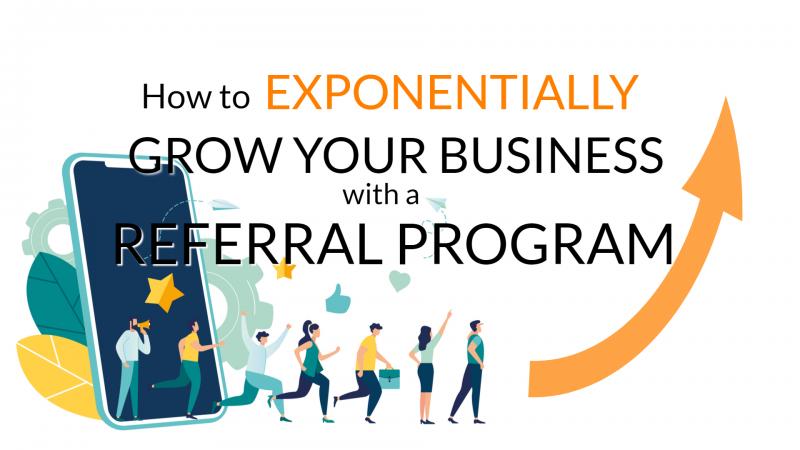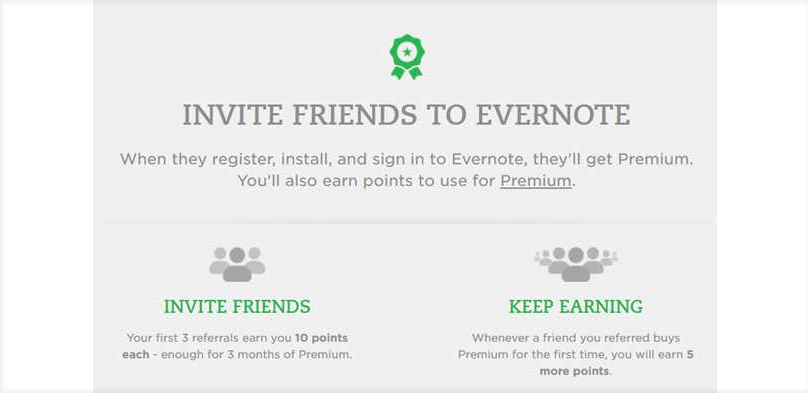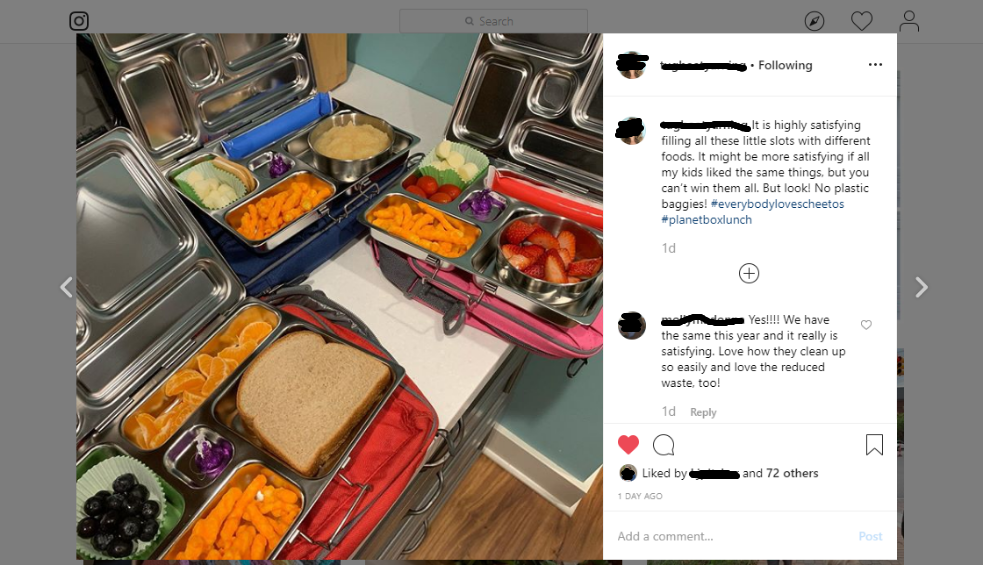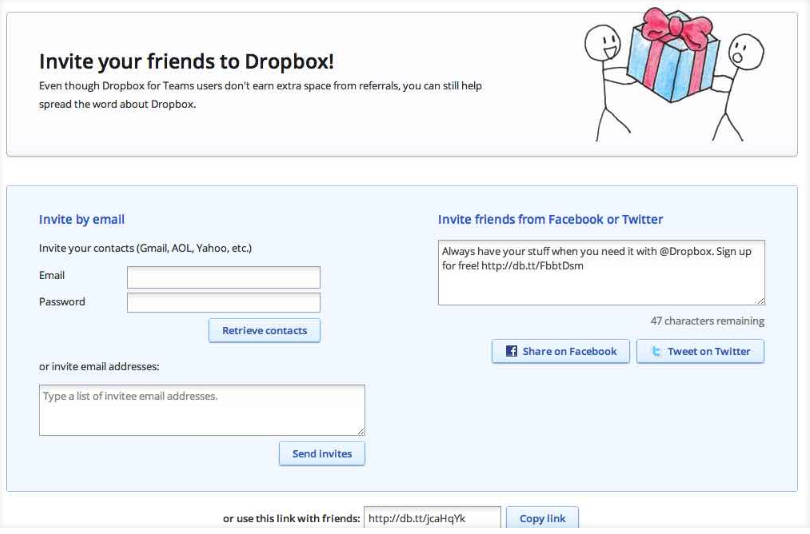
How to use a Referral Program for your Business. Leading companies like Uber, Amazon, and Dropbox are successfully leveraging the power of referral marketing to get more sales and long-term, loyal customers. Find out how you can create a successful referral program for your business.
The Internet makes audiences more accessible than ever to large and small businesses. Social media, email, and digital advertising can take your brand’s message directly to consumers.
But while your audience is with easy reach, it is also within easy reach of the competition. Breaking through the noise is increasingly challenging. How can a small to medium-sized business compete with big companies with massive digital marketing budgets?
The best way to earn the trust and attention of your audience is through referral marketing. Building a successful referral program will give your business a huge advantage.
What is a referral program?
A referral program is any deliberate attempt by a business to encourage people to send referrals. A referral program typically offers rewards in exchange for sending potential customers to a website, or by somehow sharing information about the company or its products.
Some examples of popular referral programs you may have seen:
Uber.
Uber offers “Give 10, Get 10” for anyone who sends out a referral through the app to a friend. Both the referrer and the recipient get $10 towards their account when the recipient uses Uber to take a ride.
Dropbox.
Dropbox offered users an increase in storage space for referrals, as well as better storage space of the people who received the referral.
Other major brands using referral programs include Amazon, Tesla, PayPal, EventBrite, Evernote, and more!
What are the benefits of referral marketing?
Referral programs are so popular because they work.
Referral Programs build Trust
Trust is a tough commodity to come by on the Internet. Bigger brands have an easier time gaining trust in their business, but new or smaller businesses need a way to convince potential customers they are worth taking a risk on.
That is where referrals come in. People trust reviews as much as they trust their friends. How much better is it then when a friend or acquaintance invites you to try a product?
Nielsen Global Trust Advertising Report points out that people are four times as likely to buy when referred by a friend, and renowned sales trainer Tom Hopkins completed a study several years ago that found that referred leads are closed at a ratio of 60% compared to just 10% for non-qualified leads.
Referral marketing allows you to leverage the trust between friends on behalf of your business. We might not want to use a coupon from a company we don’t know, but when our friend sends us that coupon for a company they are recommending, we are much more likely to take the discount and give that business a try.
Referral Programs use Incentives
If a customer is already enjoying your service, and you provide them with a simple way to tell someone about it while at the same time being rewarded with something free – they are probably going to take you up on that offer.
This is using "emotional selling", by using people's desire to save money or earn something more. It is also playing on the feeling of obligation -- "James invited me to check out this service, I should at least click on the link and see what it is all about."
Referred Leads are more Qualified Leads
Friends are more likely to refer someone who would benefit from your products or services.
A good referral marketing program can quickly expand and provide a good flow of qualified and interested prospects. So you can focus on quality customers who are highly profitable for your business and not necessarily focus on anything that comes your way.
Referred leads are more loyal
Referral marketing is exponential. One person that refers two others can then quickly become four, then eight, and so on.
In fact, referred customers are proven to be good leads that also stay with your business longer than other types of customers, as explained by the American Marketing Association.
To add on to that, Wharton School of Business found that referred customers are a whopping 16% – 24% more loyal on average than others. That initial trust goes a long way, and gives you loyal customers that are more likely to bring in more business.
Referral programs are more affordable
Unlike advertising where you pay for an ad and hope people come find your website or click on your link, with referral marketing you only pay when you make a sale. Like in our Uber example, Uber only pays the $10 when a new customer takes a ride and uses their service. Dropbox only gives our more space when a new user signs up.
How to start a successful referral program
1. Determine a Goal
What do you hope to accomplish with a referral program?
Consider what is required in your industry to make a sale. For example, here at ApogeeINVENT our referral program is a little different than a retail business like Amazon. Our sales require some consultation and involvement from our sales team, so we ask our referral partners to introduce us to a potential prospect, and we pay a commission once we close the sale.
Consider what is required to make a sale, what are barriers for purchasing, and if you need to be involved in the process.
Then do the math. How much can you spend on incentives for new customers and rewards the referring customer? What about production? If 10% of the referrals convert to customers, will you have the ability to fulfill those sales?
Once you’ve set up a goal and determined the resources needed, you can move on to defining your referral audience.
2. Who are your referrers?
How you set up your referral program will depend on who is doing the referring. Will your customers be the primary source of referrals? Do you have a lead list you could warm up and use as refers? Partners or vendor lists?
We get referrals from previous clients, but more often our referrals come from industry professionals like consultants or partners we work with that offer complimentary services. These partners or professionals might not benefit from additional service upgrades from us, but they certainly appreciate a cash commission.
Now that you have a list of referrers, you can decide the best way to reach them and what incentives to offer.
3. Determine the best way to reach your referrers.
If your top referrers will be customers, you might want to include a referral link directly on the shopping cart page, or in the thank you email.
For customers using an app or website service, you can include a referral link or invite system directly in their dashboard of the app or website.
Perhaps you have a list leads or vendors, and the best way to reach out is through an email campaign.
Once you’ve determined how to reach out, you need to set up an incentive for them to participate.
4. Create your incentives.
If people really enjoy your product or service, they may just recommend it, like my friend who absolutely sold me on Planet boxes with this post on Instagram. If you feel like maybe you can’t offer any incentives at this time, just asking your happy customers to mention your product, or creating a unique hashtag could go a long way in getting you referrals.
But if you want to create a deliberate, systematic approach to leveraging these potential referrals, you need some kind of incentive.
Like I mentioned above, the reward should fit your audience. Since many of our referrers are not customers, we offer a cash incentive for referrals that turn into sales.
But cash rewards, while highly motivating, might not be right for every business. Free upgrades, or points towards free upgrades, or the ability to earn a free product can also help motivate users to refer others. Some social sites even use special badges or allow users with a high amount of claimed referrals to unlock special features.
Pick a reward that will appeal most to your target audience described in Step 2. Then use your knowledge from Step 3 of the best way to reach your audience to determine how they can refer others and claim their reward. Make the process as simple and painless as possible.
This takes us to step 5: Creating resources.
Step 5. Create Resources for Referrers.
As part of your goal in making this process as simple and painless as possible, provide any resources your referrers might need. This includes emails they can easily send to others, or a share link they can post out on social media that tracks any clicks and conversions (we’ll talk more about this in step 6).
Determine what tools your referrers need and make them accessible. Below is a list of suggested resources from Hubspot:
- Emails for each type of contact telling them about your referral program
- A message explaining what types of customers fit well with your business. You need to paint a picture in their minds of your ideal customer
- A workflow that leads your contacts through the program and alerts your sales team when to call
- A landing page that provides a place for your contacts to give you their friend's information
- Scripts for your sales and customer support teams to follow when explaining your referral programs
- A referral kit filled with resources for your contacts to share with their friends: this can include case studies, testimonials, eBooks, videos, anything that gives insight into working with your business
As you can see in example from Dropbox below, they give users many different options to share their links with friends, from email to social media to a unique link they can send anywhere.
Step 6: Track your Referrals
No matter what size business you own, having a system to track your referral program is essential.
What should you be tracking?
- Who was referred and who referred them
- When they were referred
- Whether or not they converted or were sold
- How you're going to nurture and follow up with them, etc.
If you’re not properly tracking these things, you might drop the ball when it comes to paying out incentives or properly nurturing the leads sent your way. That makes this endeavor unsuccessful, and worse, it can turn a happy customer into an angry one.
If you’re serious about leveraging referral marketing for your business, using the right software will make a big difference.
What kind of software is best for Referral Programs?
Software can be used in a variety of ways. We’ve built many kind of software for referral programs and affiliate tracking. A CRM goes a long way in managing customers and new leads sent from customers. But software like our TitanAFFILIATE can make your process much more automated, and allow your program to grow exponentially.
Some of the software we’ve built for our clients include a "viral inviter" system to complete affiliate tracking that automatically pays commissions. The right software can generate unique links or even landing pages for each member, assign coupon or invite codes they can share with others, and much more.
If you’ve got an idea for a referral program but need help getting it off the ground with the right software, talk to us right now. We’ve been helping companies leverage referral and affiliate marketing for over a decade.




